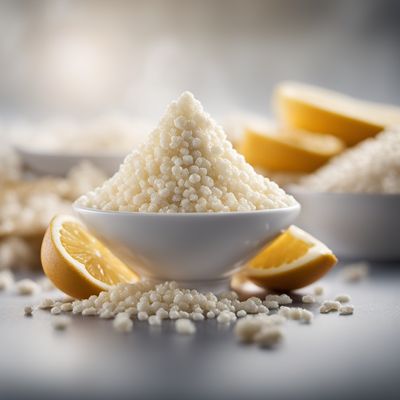
Ingredient
Galactose
The Sweet Science of Galactose: Unveiling the Hidden Sugar
Galactose, a monosaccharide, is a white crystalline powder with a sweet taste. It is less soluble than glucose and fructose, and its texture is similar to that of granulated sugar. Galactose is often used as a sweetener in the food industry and can be found in dairy products, fruits, and vegetables. Its appearance is similar to table sugar, but it has a slightly different taste and texture.
Origins and history
Galactose was first discovered in 1855 by the French chemist Jean Baptiste Boussingault. It is naturally present in milk and dairy products, where it is bound to glucose to form lactose. Galactose gained recognition in the early 20th century when its role in lactose metabolism was discovered. Since then, it has been extensively studied for its nutritional and physiological effects.
Nutritional information
Galactose provides approximately 4 calories per gram, similar to other sugars. It is a carbohydrate that the body can convert into energy. However, excessive consumption of galactose can lead to health issues, particularly for individuals with galactosemia, a rare genetic disorder.
Allergens
Galactose does not pose any known allergenic risks.
How to select
When purchasing galactose, look for a reputable brand or supplier to ensure the highest quality. Check the packaging for any signs of damage or tampering. Additionally, consider purchasing organic galactose if you prefer a more natural option.
Storage recommendations
To maintain the freshness and quality of galactose, store it in an airtight container in a cool, dry place away from direct sunlight. Proper storage can help prevent clumping and extend its shelf life.
How to produce
Galactose is primarily produced through the hydrolysis of lactose, which is found in milk. This process involves breaking down lactose into its individual components, glucose and galactose. However, producing galactose on a small scale may not be practical for amateurs, as it requires specialized equipment and knowledge.
Preparation tips
Galactose can be used as a sweetener in various recipes, such as desserts, baked goods, and beverages. It dissolves easily in hot liquids, making it suitable for sweetening hot drinks like coffee or tea. When using galactose in recipes, keep in mind that it is slightly less sweet than regular sugar, so you may need to adjust the amount accordingly.
Culinary uses
Galactose is commonly used in the food industry as a sweetener and flavor enhancer. It can be found in a variety of products, including ice cream, yogurt, candies, and baked goods. Its unique taste and texture make it a popular choice for creating creamy and indulgent desserts.
Availability
Galactose is commonly available in most grocery stores and supermarkets, particularly in the baking or sweetener aisle. It can also be purchased online from various retailers.



